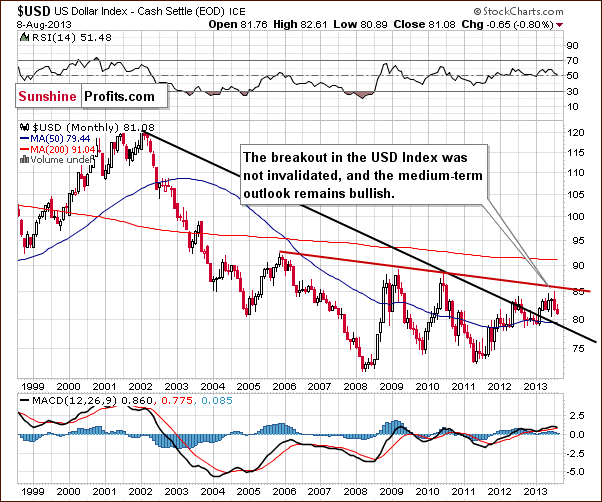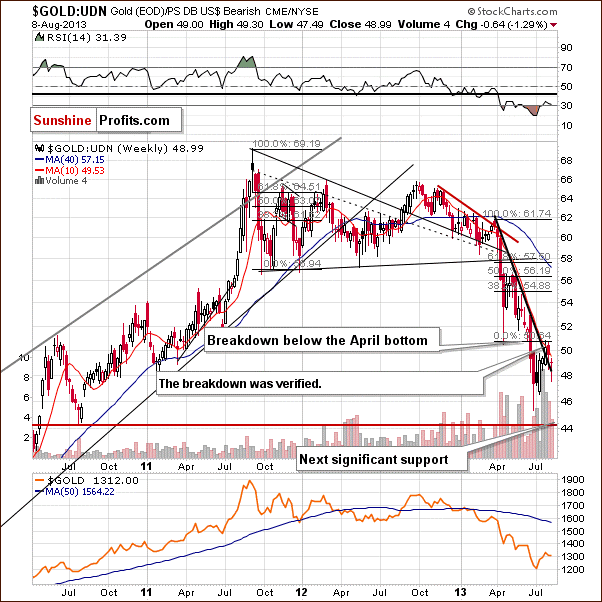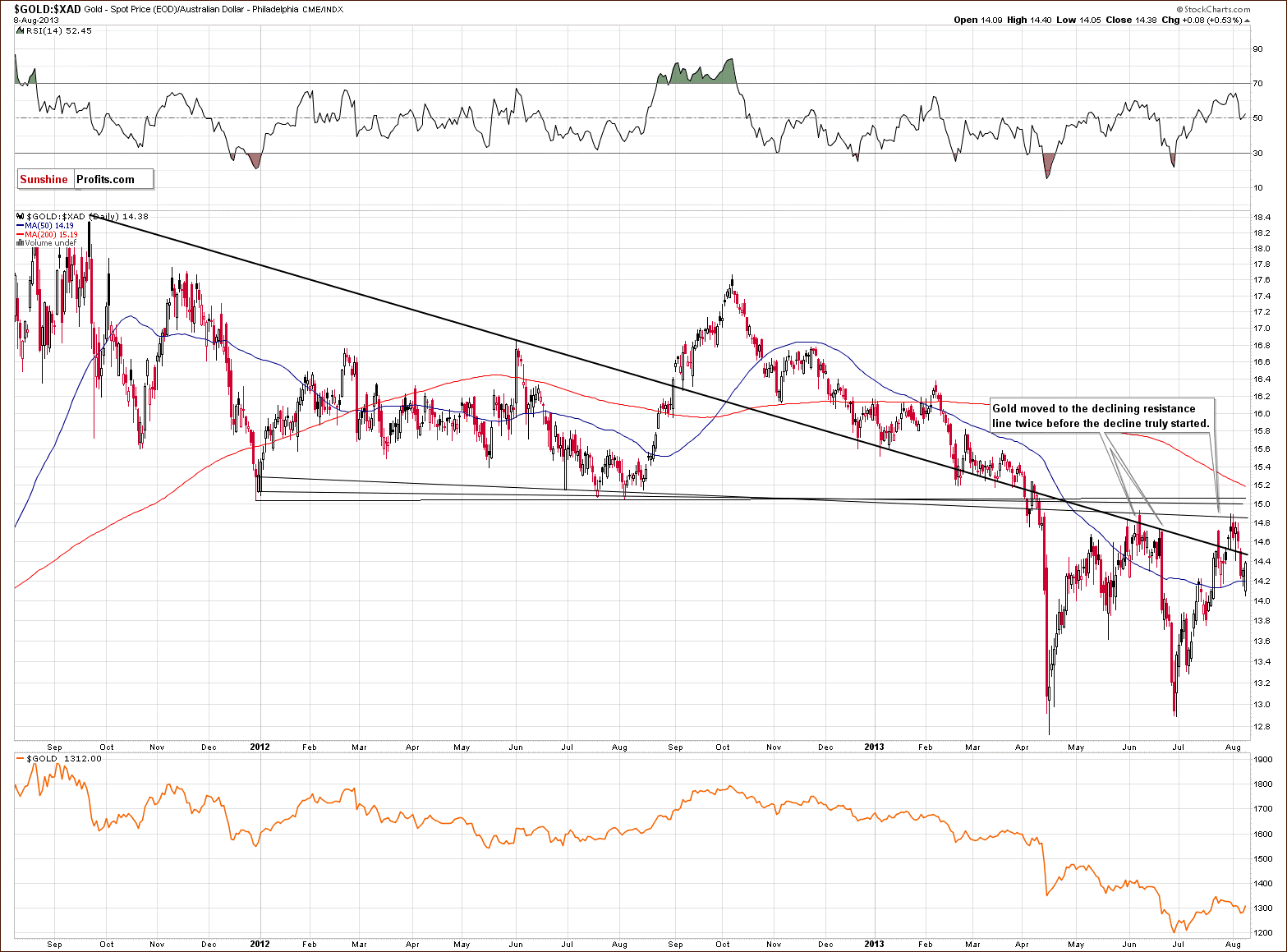Currency
Miners Become Currency Traders
There’s been one bright point for miners lately: depreciating global currencies.
Reports this month suggest that Australian coal miners are benefiting from a recently-weaker Aussie dollar.
Management at Indonesian coal miner PT Adaro Energy said their company is facing stiffer competition from these re-invigorated Australian producers. With the A$ lower against the USD, such miners make a larger domestic profit selling their product abroad in American dollars.
But it’s not just Australia. Indonesia’s biggest coal miner PT Bukit Asam said it may also benefit from a weaker rupiah when it next reports earnings.
It seems the story is the same in many mining-focused economies. South African coal miner and synfuel-maker Sasol reported last week that its headline earnings for the year ended June 30 may jump as much as 30%. Management cited a 14% depreciation on the rand against the dollar as part of the reason for the surprising rise in profits.
Watch for the same story to unfold in Brazil. The real has dropped a staggering 13% against the dollar in just three months. This is bad news for Brazilian firms buying USD-priced imports. But it’s great news for miners and oil producers who sell their product in dollars, and mainly pay expenses in local currency.
We could see some earnings surprises here over the next quarter or two.
Here’s to foreign exchange,

Without a doubt, the recent weeks were tough for the U.S. currency. The U.S. dollar fell as investors weighed when the Federal Reserve would slow the pace of bond purchases that had contributed to weakening the greenback. It also dropped against all its major counterparts after a government report last week showed American employers hired fewer workers in July than economists had predicted. Another bearish factor which weakened the dollar was strong data from China that suggested economic optimism.
“The weakness in the dollar is causing some short-covering in gold,” said Ronald Leung at dealer and refiner Lee Cheong Gold Dealers in Hong Kong.
What has happened with gold in the recent weeks? After a rally to over $1,347 the yellow metal declined below $1,300 per ounce and then pulled back to $1,320. In the following days we saw a sharp drop to a three-week low and an equally strong move to the upside which took gold to over $1,316 per ounce. Some investors said it was a rollercoaster.
Yesterday, gold bounced higher and gained nearly 2 percent. Its recovery was helped by the dollar’s slide to a seven-week low. However, the improvement didn’t last long and today the shiny metal eased back below $1,310 an ounce as the dollar recovered.
This interesting relationship between the U.S. dollar and gold has encouraged us to examine the US Dollar Index and the gold chart from two other perspectives to see if there’s anything on the horizon that could drive gold prices higher or lower shortly. We’ll start with the USD Index very long-term chart to put the gold charts into perspective (charts courtesy by http://stockcharts.com.)

As we wrote in our essay on gold, stocks and the dollar on July 24, 2013:
The breakout above the declining support/resistance line (currently close to 79) was still not invalidated.
The above paragraph is up-to-date also today. From the long-term perspective, the situation remains bullish.
Now, let’s zoom in on our picture of the USD Index and see the medium-term chart.

On the above weekly chart, we can see that in the past week, the USD Index declined once again. The recent declines took the index to the medium-term support line (currently close to the 81 level). Keep in mind that this strong support line stopped the decline in June (it was not even reached) and encouraged buyers to act, which resulted in a sharp rally in the following days. Taking this into account, we might see a similar situation in the coming days.
From this perspective, the medium-term uptrend is not threatened, and the situation remains bullish. Therefore we can expect the dollar to strengthen further in the coming weeks.
To make the U.S. dollar perspective complete, let’s see how the situation in the US currency may translate into the precious metals market. Let’s take a look at the Correlation Matrix (namely: gold correlations and silver correlations).

Basically, there have been changes in the values of coefficients since we commented on them previously in our essay on gold, stocks and the dollar on July 24:
We have seen negative correlation between the metals and the USD Index(…). Taking the short-term, bullish outlook for the USD Index into account, the implications for gold, silver, and the mining stocks are clearly bearish at this time.
At this point we would like to add that even though the USD Index declined by almost a full index point this week, gold didn’t rally – it moved lower by about $3. Gold’s underperformance remains in place – or at least Thursday’s rally is not enough to change it.
Once we know the current situation in the U.S currency and its implications for the precious metals sector, let’s find out what happened during the recent days and check the current situation in gold from the perspective of the Australian dollar. Does it provide any important clues as to further gold’s price movements?
Click HERE or on image for larger version
On the gold priced in Australian dollar chart, we see that the previous breakout was invalidated very quickly, and the price came back below this declining resistance line. However, buyers didn’t give up and triggered one more move to the upside. That increase resulted in the next breakout above the previously-broken resistance/support line.
Despite this growth, gold did not manage to break above the June top as the above-mentioned strong resistance level stopped the rally. The corrective move took the yellow metal below the previously-broken resistance/support line and reached the 50-day moving average.
Keep in mind that we saw similar price action in June. After an invalidation of a breakout above the above-mentioned declining support/resistance line, there was a pullback to this resistance line. The buyers, however, didn’t manage to push gold above it, resulting in strong declines. This time, the gold bulls were stronger and pushed the price a bit higher, but it doesn’t change the similarity between these two situations (still looks like a double-top pattern).
In June, the strong corrective move took gold‘s price all the way back down to the April bottom area. If we see similar price action here, gold priced in Australian dollars will likely decline heavily once again.
So, from this point of view, the recent price increase hasn’t changed the current outlook, and the implications remain bearish.
To finish off, let’s have a glance at a chart that synthesizes the “non-USD” perspective, as it features gold‘s price relative to an index of foreign currencies.

At the end of July we saw a move to the upside which took gold above the declining support/resistance level. However, the yellow metal didn’t manage to move back above the April bottom. This event brought negative consequences in the following days.
We clearly see that gold showed weakness in the past week as well as this one, and the breakdown below the April’s bottom was verified.
Gold has not broken below the declining support line so far. When it does, the decline will be likely to accelerate.
Summing up, the situation in gold remains bearish. Gold moved higher on Thursday, but overall it’s down $2.90 this week (taking Thursday’s closing price into account), while at the same time, the USD Index is down almost a full index point. Gold continues to underperform the dollar and a one-day rally on relatively low (compared to the size of the rally and volume accompanying previous days’ declines) volume doesn’t change that. The situation remains in tune with previous bearish price patterns.
Thank you for reading. Have a great and profitable week!
Przemyslaw Radomski, CFA
Founder, Editor-in-chief
Gold Investment & Silver Investment Website – SunshineProfits.com
* * * * *
Disclaimer
All essays, research and information found above represent analyses and opinions of Przemyslaw Radomski, CFA and Sunshine Profits’ associates only. As such, it may prove wrong and be a subject to change without notice. Opinions and analyses were based on data available to authors of respective essays at the time of writing. Although the information provided above is based on careful research and sources that are believed to be accurate, Przemyslaw Radomski, CFA and his associates do not guarantee the accuracy or thoroughness of the data or information reported. The opinions published above are neither an offer nor a recommendation to purchase or sell any securities. Mr. Radomski is not a Registered Securities Advisor. By reading Przemyslaw Radomski’s, CFA reports you fully agree that he will not be held responsible or liable for any decisions you make regarding any information provided in these reports. Investing, trading and speculation in any financial markets may involve high risk of loss. Przemyslaw Radomski, CFA, Sunshine Profits’ employees and affiliates as well as members of their families may have a short or long position in any securities, including those mentioned in any of the reports or essays, and may make additional purchases and/or sales of those securities without notice.

Second quarter GDP figures in Japan came in well below expectations. The Japanese economy grew 2.6% in Q2 at an annualized rate, below economists’ consensus prediction for 3.6% growth. Business spending fell 0.1% year over year in the second quarter, versus forecasts for a 0.6% rise.
Japan industrial production contracted 3.1% from the previous month in June and fell 4.6% year over year, versus a 3.3% and 4.8% contraction, respectively, in May. Capacity utilization fell 2.3% in June after rising 2.3% the month before.
The Yen hit $96.04 against $96.33 prior to the data print, MarketWatch’s Michael Kitchen says.
The Nikkei is also off -1.26%.
Seasonally-adjusted GDP climbed +0.6% against Q1’s +0.9%.
As we recently explained, Japanese economic data has been doing a lot of missing expectations lately. Industrial production, household spending and July PMI all fell short.
Plus, July employment fell for the first time in three months.
Abe-nomics — the loose monetary policy ordered by Prime Minister Shinzo Abe to reinflate Japan’s economy — have now been in place about half a year.

Is China Doomed?

Between 1978, the year Deng Xiaoping’s sweeping economic reforms were launched, and 2011, China’s GDP increased by an average of 10 percent annually, three times that of the global economy. Now the boom times may be over.
By mid-2013, economic growth had slowed to 7.7 percent. That’s still a roaring pace compared to the rest of the world. Europeans, Americans and even Japanese might say about China’s slippage, “We should all have such problems.” Still, in thirty-five years, the Chinese polity hasn’t had to handle a prolonged economic slowdown and one may be in the offing. Hence the debate on what the deceleration could portend should it get worse and linger.
Is China headed for upheaval? The argument that it is seems plausible. Eye-popping growth rates and the accompanying increase in living standards—and of course the state’s massive machinery of repression—have been critical to maintaining political stability and public support for the Communist Party. Or is Beijing so skillful, so flush with foreign-exchange reserves—and hence with the capital needed for priming the economy and managing financial crises—that slower economic growth is no big deal? Don’t look to the experts for enlightenment on which take is true: they see the same data but draw different conclusions.
We’ll get to those incongruous assessments soon, but first, some context on China’s remarkable achievements since 1978. (While some China watchers think Beijing cooks the books, they do concur that the country’s economic transformation has been breathtaking.) China’s GDP, measured in purchasing-power parity using current dollars, was $248 billion in 1980; by 2012 it had soared to $12.3 trillion. Per-capita GDP—a useful measure of prosperity, even though it doesn’t reveal income distribution, the inequality of which has soared in China—has likewise surged, from $205 (at purchasing-power parity) in 1980 to $11,316 in 2011. Together, massive investment, breakneck economic growth, sharp declines in population growth, the advent of universal literacy and big increases in the number of people with a higher education have helped pulled six hundred million Chinese out of poverty.
Other numbers illustrate China’s economic makeover. In 1978 China accounted for about 2 percent of the value of global exports. By 2010 its share had risen to 10 percent, and the total value was $1.5 trillion. This success in the global marketplace was achieved to no small extent at the expense of the world’s other economic behemoths, Japan and the United States, whose shares declined. What makes this particularly noteworthy is that China’s GDP, though it recently surpassed Japan’s, is still smaller America’s, which was $15.7 trillion in 2012. Yet the value of China’s tradelast year was $3.87 trillion, eclipsing America’s total of $3.82 trillion. Even allowing for differences in the two economies’ relative dependence on trade this was headline-grabbing news. And it’s not just the value of what China sells the world but the difference that’s emerged in what it sells. Staples such as apparel, toys, shoes and basic electronics have been replaced by machinery and equipment, which account for over 50 percent of China’s exports, compared to just over 25 percent in 1995. Whether it’s energy, banking or telecommunications, Chinese companies have a global presence and are competing with American, European, South Korean and Japanese multinational corporations.
Okay, so what’s the problem then? It’s on this question that informed opinion is split. Paul Krugman is sure that the decrease in China’s economic-growth rate portends “big trouble” and that the signs are “unmistakable.” He and others pessimists chalk up China’s economic success to a combination of a vast rural population that has been available for induction into the industrial sector; low wages for workers, a function of an abundant supply of labor from the countryside; massive investment at the expense of consumption; and an exchange-rate policy that keeps the value of China’s currency low and its export earnings high.
The old paradigm, effective though it was, is starting to crumble. We’ve seen this before. The Soviet economy started slowing in the 1960s once it became harder—because of falling population-growth rates and the drying of the rural labor reservoir—to rack up big growth rates by pumping more people and money into manufacturing. The big difference is that while total-factor productivity (output per composite unit of labor and capital) didn’t pick up the slack in the USSR, in China it has increased significantly over the past two decades. Still, with Europe mired in recession, America posting anemic economic-growth rates and adding few jobs, and India’s and Brazil’s economies slowing down, it’s going to be harder for China to continue banking on big sales abroad to sustain rapid growth. So a lot hinges on whether Beijing finds a new way to sustain high growth, one that goes beyond basic industrialization and catching up to the West and sets trends in innovation.
….read page 2 HERE

Chinese economic data Friday was mixed relative to expectations but on balance was supportive for commodities, says CIBC. Industrial production accelerated 9.7% year-on-year in July. “That’s appreciably stronger than the 8.9% pace expected by the market and previous month’s tempo, although still well below the trend of recent years,” CIBC says. “Retail sales in contrast came in slightly below expectations, advancing by 13.2% (consensus 13.5%), showing little change from the preceding month’s pace.” Fixed-asset investment was up 20.1%, essentially matching estimates. Consumer inflation was steady at 2.7%, a tick below expectations. Producer price inflation fell by 2.3% year-on-year. The data come on the heels of a report Thursday showing exports rose 5.1% year-on-year in July, while imports jumped 10.9%. “It’s risky to read too much into one month of data and there are as yet few signs of a solid turnaround,” CIBC says. “Still, today’s numbers as with yesterday’s trade release lends support to the view that the economy’s performance may be bottoming after a six-month long downshift. Today’s numbers are lending support to commodities and stocks in Asia.” Most base and precious metals are steady to slightly higher and crude oil is also higher as the tra













